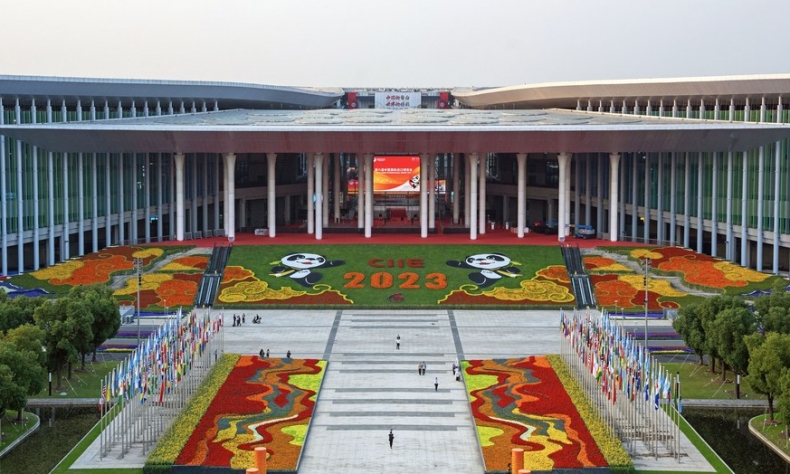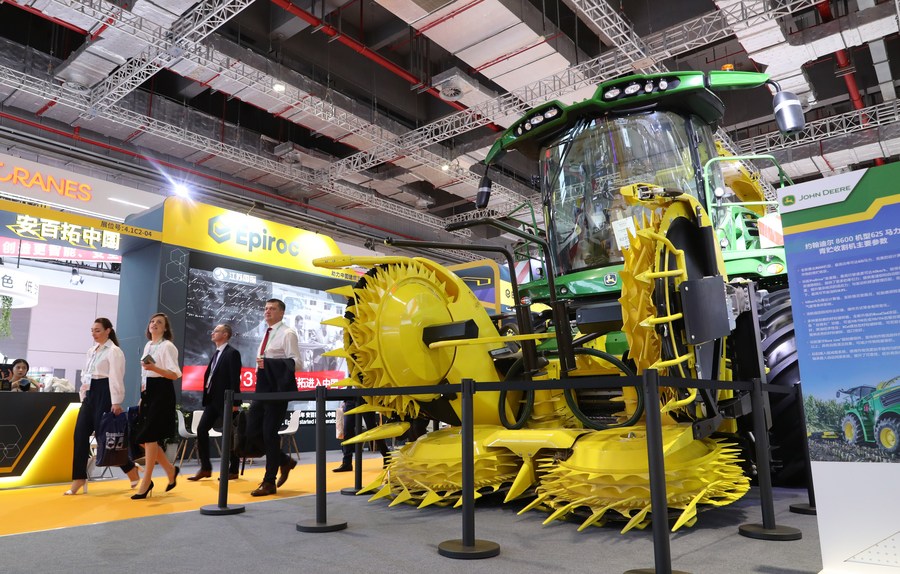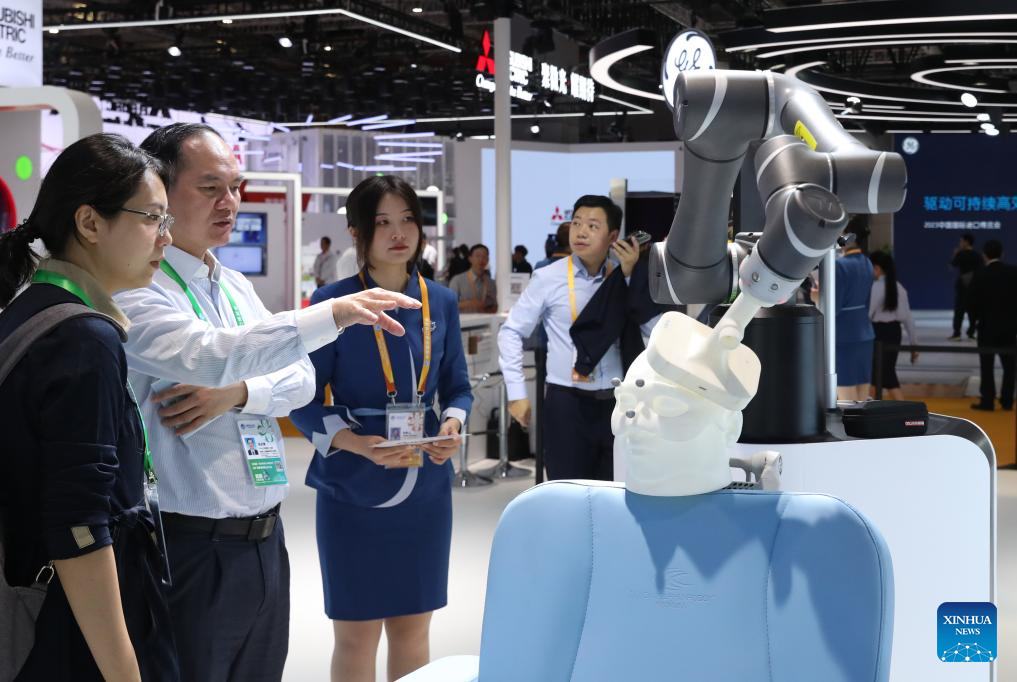The Sixth CIIE Targets New Partnerships and Strengthen Old Ties

CIIE 2023 is seen as a good opportunity to overcome mistrust in ties with China and call for greater efforts to stabilize relations and put them back on the path of healthy, stable and mutual development.
The sixth edition of China International Import Expo (CIIE) is as important as the first one in 2018: it will be the first edition that will bring attendants back in-person to Shanghai after the Covid-19 pandemic. From November 5 to 10 the National Convention & Exhibition Center hosts representatives from 154 countries, regions and international organizations. This edition marks a full recovery to pre-pandemic levels with its new record of 289 Global Fortune 500 companies and industry leaders, over 3,400 exhibitors and 410,000 professional visitors registered for the event. According to the CIIE Bureau, approximately 200 companies have committed to participating for the sixth consecutive year, and some 400 businesses are returning to the expo after an outage of two years or more.
The 2023 edition peculiarity also stands in this very challenging historical moment full of big happenings: the war in Ukraine and in the Gaza strip, the rise and expansion of the BRICS countries, the ongoing tensions between China and the United States, the slow and uneven recovery of world economy and etc. Every actor on the global stage has more than one reason to benefit from this year’s expo, since China keeps exporting so much more than it imports.
Commercial and political implications of CIIE 2023
CIIE 2023 is seen as a good opportunity to overcome mistrust in ties with China and call for greater efforts to stabilize relations and put them back on the path of healthy, stable and mutual development. The most important signal in this direction has been sent by the American Chamber of Commerce (AmCham) in Shanghai that co-hosts the American Food and Agriculture Pavilion with the U.S. Department of Agriculture at this year’s CIIE, marking the first official U.S. participation in China’s major import fair since its first edition in 2018. It is the first time U.S. government agencies have led delegations to the event.

According to trade experts, the decision represents the latest sign of improving ties between China and the U.S. amid intensifying official and business exchanges, and it could pave the way for more engagement despite some U.S. politicians’ decoupling push. The pavilion showcases agricultural produce and technology from the U.S. states of California, Idaho and Georgia. Edward Xie, China director for the U.S. Poultry and Egg Export Council explained that China has become the largest market for U.S. chicken exports in terms of value, with more than $1.2 billion worth of chicken exports in 2022. In the first nine months of this year China imported 200,000 tonnes of chicken products from the U.S., amounting to $650 million.
“We hope that through our first-ever participation in the China import expo, more Chinese consumers will know that U.S. poultry is safe and healthy and promote the development and expansion of China-U.S. poultry trade,” said Xie. Other U.S. companies, including chipmaker Micron, are participating in the CIIE underscoring their determination to hold onto the Chinese market despite the U.S. government’s crackdowns and blockades.
The second most significant signal of the importance of this CIIE edition is the presence of Australia Prime Minister Anthony Albanese at the exhibition. It’s the first visit paid by an Australian leader in seven years of absence from China after a diplomatic stalemate started in 2020 when Beijing launched trade restrictions across a swath of Australian exports. Last month the two countries reached an agreement that marked the end of tariffs on wine – one of the products most affected by Chinese trade curbs – whose resolution Canberra said would be worth about $773.6 million to Australia. Albanese visit is widely seen as a step forward in both sides’ efforts to stabilize the relationship after years of economic tension.
Numbers and new entries of CIIE 2023
Over 400 new products, technologies and services will be presented at the six exhibition areas: Food and Agricultural Products, Intelligent Industry and Information Technology, Medical Equipment and Healthcare Products, Consumer Goods, Trade in Services, and Automobiles.

According to Sheng Qiuping, China Vice-Minister of Commerce, compared with previous editions, the section within the CIIE that features low-carbon solutions, artificial intelligence and other cutting-edge technologies, as well as consumer goods, is expected to rise by 30 percent in size this year. Participants include the world’s top 15 automotive brands, top 10 industrial electrical companies, top 10 medical device companies, three major mining giants, four major grain traders and five major shipping companies. Some 1,500 small and medium-sized enterprises will also be showcasing their products at the event. In this year’s exhibition, 16 of the 69 countries are the world’s least developed countries: the CIIE will promote the entry of local specialty products from these least developed countries into the Chinese market by providing free booths, subsidies and preferential tax policies, according to Xinhua News Agency. The number of participants and the exhibition area of 367,000 square meters both hit an all-time high.
More than 1,500 enterprises from the Belt and Road countries and regions have signed up for this year’s event: out of the 72 national pavilions to be displayed at the CIIE, 64 are from Belt and Road partner countries. Among these there is Honduras that became a Belt and Road partner in June and will send a high-level delegation to the event in the country’s first attendance of the CIIE. Other ten countries will attend the expo for the first time: Bahrain, Central African Republic, the Commonwealth of Dominica, Gambia, Guinea-Bissau, Mali, Oman, Sierra Leone, Togo and Zimbabwe. Singapore Business Federation, which represents 29,000 Singaporean companies, explained that the federation is leading a delegation of 56 companies to the CIIE this year and 22 are participating for the first time.
Last year, Chinese companies reached intention to buy goods and services worth $73.5 billion from foreign exhibitors, an increase of 4 percent from 2021. The previous five expos together have seen about 350 billion U.S. dollars’ worth of tentative deals, according to the Chinese Ministry of Commerce.
The author is China correspondent journalist for the Italian-language Swiss Radio-Television.
The article reflects the author’s opinions, and not necessarily the views of China Focus.
 Facebook
Facebook
 Twitter
Twitter
 Linkedin
Linkedin
 Google +
Google +










